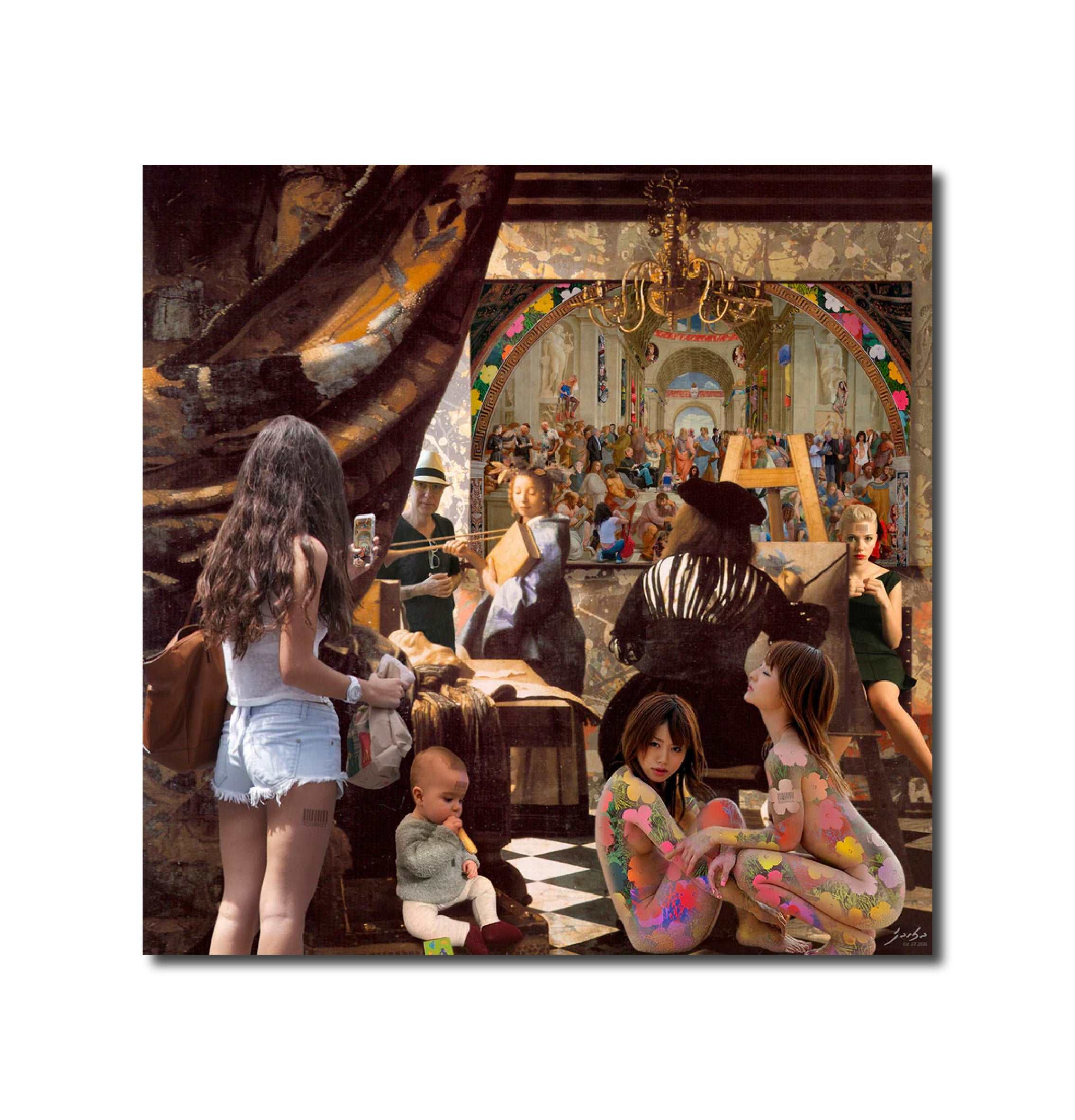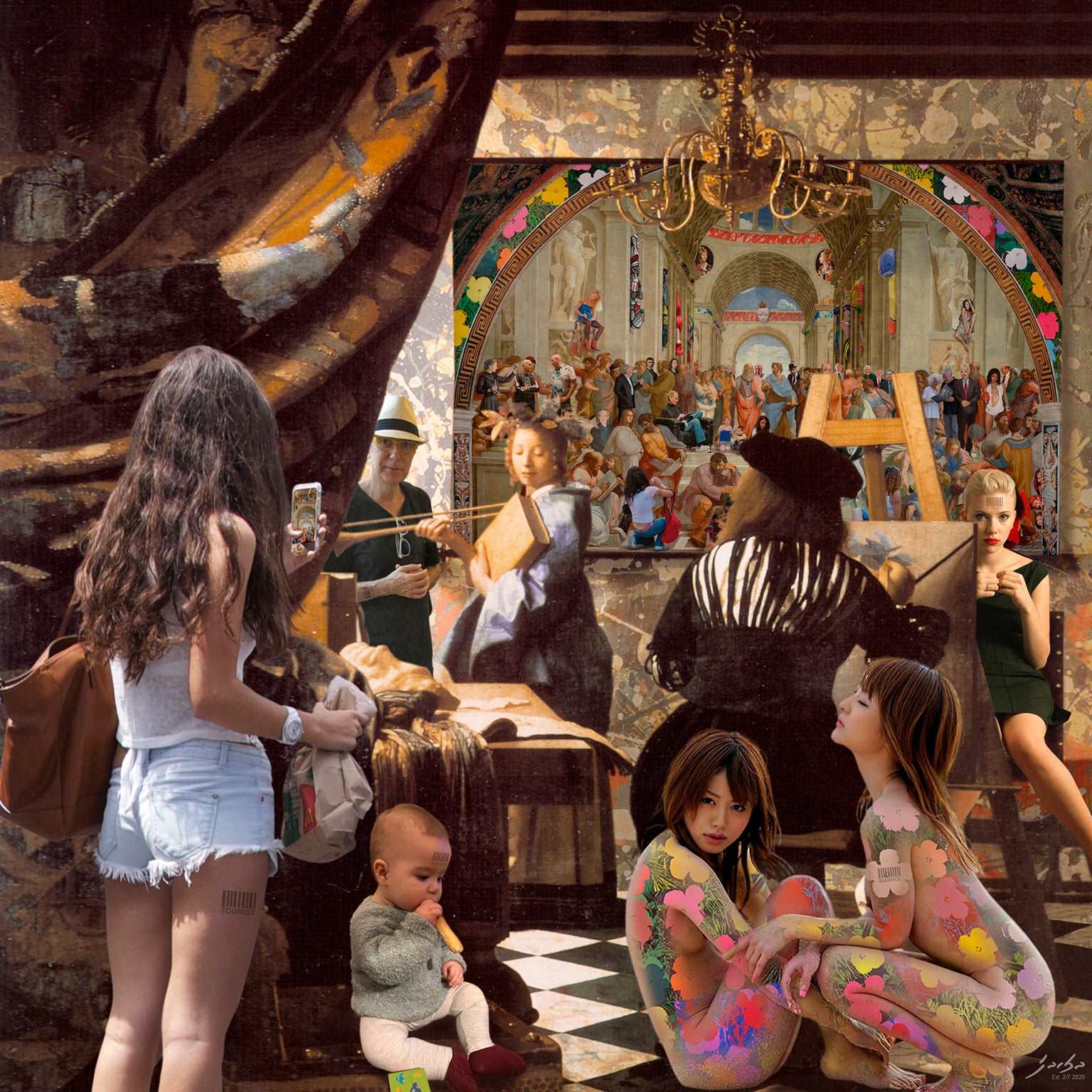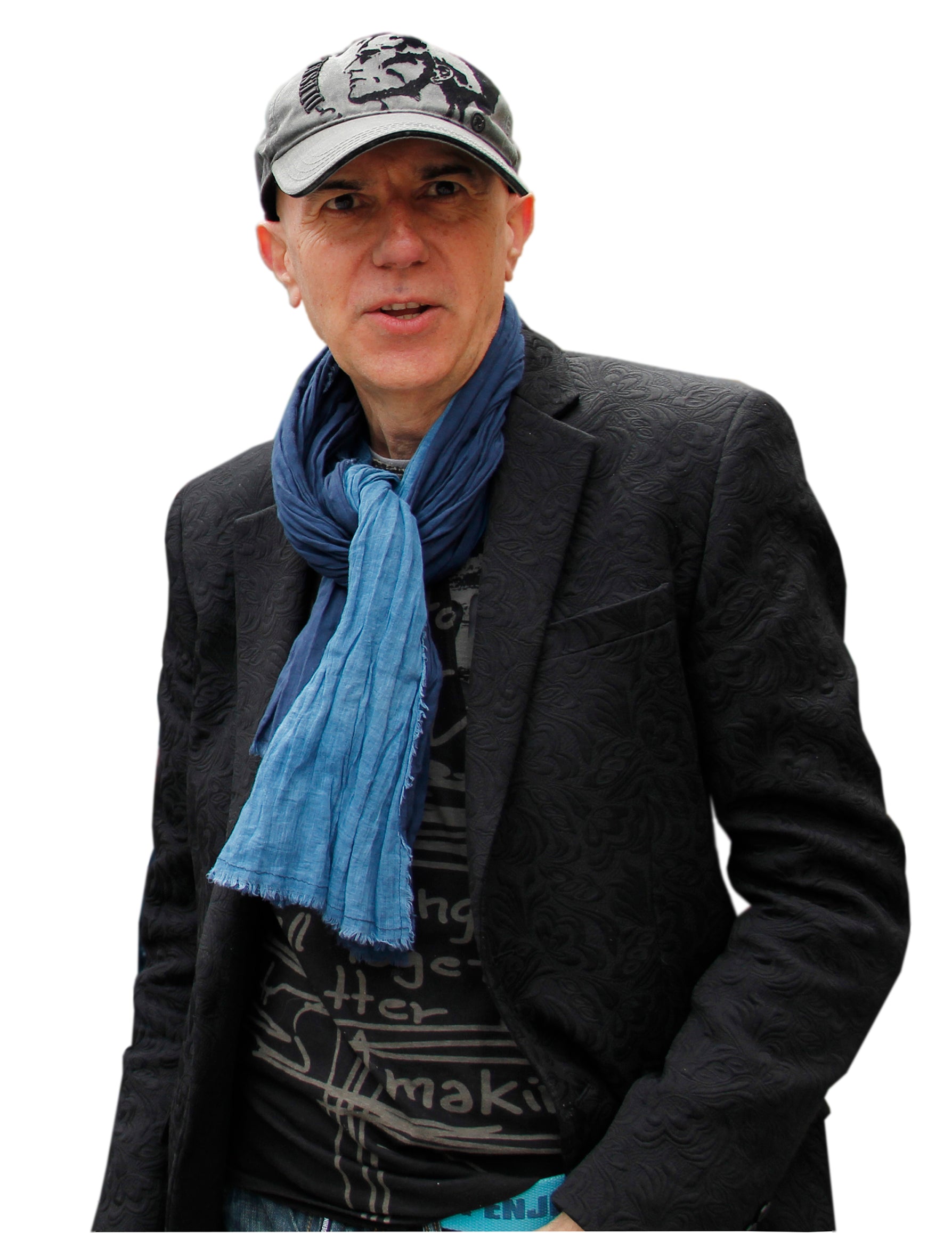

'ALLEGORY OF PAINTING' - Digital
Dimension: 19.69'' x 19.69''
Certification of Authenticity: Apricus Art Collection
Signature: Signed by Artist
A reimagined version of Vermeer's "Allegory of Painting," this piece is printed on Fabriano paper, representing Barba's signature style of merging the past with the present through digital media.
Choose options



BIOGRAPHY
Lluís Barba is a Barcelona-born artist known for his innovative approach to photography and digital art. With a background in visual arts from the University of Barcelona and further education at prominent art schools such as Massana School Art Center and Llotja Art School, Barba’s work critiques modern society’s consumerism and isolation while highlighting themes of heritage and the juxtaposition of wealth and poverty. His art is exhibited globally, from the U.S. to Europe, reflecting a diverse and impactful career in contemporary art.

Artist Statement
My work is a reflection of society and a critique of the problems it generates. ‘Art is a privileged platform and those who we have access we have to tap…’ I single out the two speeds at which society progresses, the vertiginous imbalance in our world, opulence and poverty, culture and ignorance… and on the other hand I show the isolation, mass consumption, alienation and the daily loss of identity. I try to translate these concepts conceptually and formally.
The formal part of the fascination stems from the way our brain receives external afferents, since the image we receive through the retina becomes totally fragmented at the hypothalamus, where a virtual image is reconstructed conditioned by the evolutionary parameters from our species. Which leads me to contextualize elements of reality to place them in another, creating new realities.

The items I use are the result of the photographs captured with my camera, videos and other documentation. These are characters and icons turned into symbols to convey my message in an ironic way. These elements coexist in the works of art of the past, which I use as a support. My language emerges from this combination.
Formally, I use black and white to represent the past and the colour to show our present.
I usually create a relationship between characters of the cultural world, artists, curators, filmmakers, thinkers, religious, political, poor, marginalized, displaced, in contrast to those generated by the star system, as well as works of art, sculptures… I create stereotypes ranging from military uniforms with floral patterns wielding ice cream, instead of guns, in order to demystify the image associated with aggressiveness.
I incorporate tattos of barcode, wich symbolizes the loss of individual identity, approval, alignment and mass consumption.

Recovery of past masters, contemporary artists from different disciplines as Jeff Koons, Paul McCarthy, Warhol, Lichtenstein, Donald Judd, Sol-LeWitt, Cattelan, Miró, Matthew-Barney, Richter, Rothko, Vanessa-Beecorft… and also works by artists of the past that are no longer in ‘the art guidebook’ and are almost forgotten, for me it is a contrast antagonistic.
While the classics seek perfection from perfection, contemporaries seek perfection from imperfection. The classics define the work as artistic craftsmanship, and the contemporary mechanization and seriation socializes an important part of art.
The fact I criticize society dramas through plasticity and a nice way is not accidental ‘The more people see atrocities, more likely to raise awareness and stop the same’. The formal part and the complex conceptual part create contrasting microhabitats where past and present lose their effectiveness and become virtual time.
I have a relationship of admiration with art history and I respect the old masters. I think it’s important to keep the roots and our historical memory. The contemporary art today has his foundations in the past masters, for example: Rembrandt and Caravaggio, chiaroscuro was so useful in photography and film. Leonardo structured the foundation of humanism and multidisciplinary art. Duchamp was a precursor, decoupling context of everyday objects and turning them into conceptual and artistic objects: Ready made. Mondrian worked with the structuring of a work, from the formal point of view with his theory of mass volume and colour.

